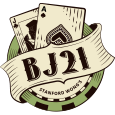That's a tip I came across on www.hitorstand.net. Please explain why one would split 4s against a dealer 5 or 6 elsewhere, but not Vegas? Thanks!
scarab


That's a tip I came across on www.hitorstand.net. Please explain why one would split 4s against a dealer 5 or 6 elsewhere, but not Vegas? Thanks!
scarab

Split 4s against dealer 5 or 6 when table offers DAS. Hit if no DAS. Doesn't matter what city you're in.

I was under the impression that with 44, you split against 4,5,6 if DAS but not if you have the index number for doubling. I always doubled in that case. Am I in error on this one?

to double 4/4 v. 5 & 6. Need clarification though.

Doubling 4/4 (8) vs 6? Shouldn't this be done at a TC of +3???
IE right or wrong, somewhere I memorized a HiLo index of +1 for doubling 8 vs 6, or +3 for doubling 8 vs 5. Did I get something wrong somewhere along the way???
Of course there is an index that says split 'em if the TC is > -5, so perhaps there is some ambiguity I am resolving incorrectly here...
Maybe I mangled something somewhere along the way... Going to check CV Blackjack real quick...
Hmm. It agrees, but I am not sure which takes precedence, DD or split. There is a usable index for either... The above is CV blackjack, complete hi-lo w/indices.
Enlighten me, please. :)

I hear it all day!! "In Vegas, you can split aces more than once", "In Vegas, they don't hit soft 17", "In Vegas.....". Does anyone get it? There IS more than one casino in Las Vegas, believe it or not. Each one with different rules, just like the riverboats out here in the midwest.


Can you cite a source? IE CV Blackjack has all the indices for Hi-Lo (among others) and it matched the index I have been using...
I'll try to run a sim later today and see what happens there... I've really not spent any time testing indices that have been published. I just use the ones that seem practical. IE for doubling it is mostly things like 9 vs 2 and 8 vs 3-6, etc...

With my CA-program I can calculate any index I need. I don't believe in simulations for establishing indexes.The error margin is as big as with early exit-polls.
The indexes you quoted have nothing to do with the decision split or double, rather with split or hit respectevely double or hit. I don't know whether there is a book that gives an index for double or split.
Usually they merely say that you should split if DAS is allowed.
Francis Salmon

I was aware that at high counts, doubling is preferable to splitting. I am not sure where I first saw this.
You can see this with CV Data. Ask for a �Full Report� and compute the index for splitting 44v6 and also for doubling 8 vs 6. The Full Report gives all the EVs thought the distribution.
For example, at TC of 8 it shows a doubling EV of 0.36, and a splitting EV of 0.39. So splitting is superior.
There are probably other ways to do this. You could probably re-define your Baseline strategy S to be Double, and compute the (reverse) index for split.
I agree that CA is very accurate when applicable. But one problem with computing indices is that you need to generate representative subsets. How do you do this?
There is sampling errors with Sims, but you can measure it, and compute the Standard Error.

Sims can be pretty accurate if you have a hot box and let it run for a while... IE I've produced some EV numbers that are _very_ close to accepted theory, after a billion sims (very close means 3 dec place accuracy or better). Wouldn't try 50,000 or something of course, unless the decision is obvious (hit or stand on 4 is a good one, doesn't take many trials to figure out that standing is bad).
But that aside, my two indices say split 4's vs 6 at a TC > -5, and double 8 vs 6 at TC of +3 or higher. I'm not sure why I should not interpret that as
(a) TC < -5, hit.
(b) -5 <= TC < 3, split
(c) TC >= 3, double
Again, this is right out of looking at the charts in CV blackjack for HiLo with indices.

For 44 vs 4, the count has to be extremely high to double while the count is modest for splitting. So splitting is usually the way to go. In fact, my own source using a proprietory computer program shows SPLIT is always better than DOUBLE for 44 vs 4,5 and 6. The program may not be bug-free but I believe the info is reliable.

My CA-program agrees that at a TC of 8.0,splitting is still better but only marginally (EV 0.359 versus 0.356 for doubling).The precise index is 8.4 (EV 0.369 versus 0.370).
I have no problem with subsets as every TC represents a typical probality for each rank. Other possible subsets will balance each other out.
You could argue that this approach is not specific enough because it treats every situation as if you had an infinite number of decks.
However when I compare my data with Wong's indexes for 4 decks or with other reliable sources, the match is almost perfect.
Francis Salmon

May be your interpretation of indices is right, but then the indices are wrong.I assume the data is for DAS rules.
First of all, -5 is far too low for hitting over splitting. Correct is -2.4.
The index of +3 doesn't make sense at all.For doubling over hitting (any 8 versus 6) it's rather +1.6 and for doubling over splitting it's +8.4 as stated above.
You should run a sim with TC+3.The difference in EV for splitting over doubling is so clear that it doesn't take much time.I expect you to find that splitting is about 4% better than doubling at that point.
Francis Salmon

With a higher TC,doubling is gaining ground over splitting.The reason is that although a dealer bust is more likely which would favor splitting, the dealer ending up with 17 is also more likely because of the high frequency of aces.In that case,it would be good to end up with 18 or even 19 which you're entitled to hope for when doubling.
I agree with the rest of your statement.
Francis Salmon

The indices in Prof BJ were computed years ago, before the proliferation of high-speed computers that we have today. They used a more crude approximation. I think Wong used a method somewhat similar to yours.
I would take Wong�s indices as the Gold Standard for indices.
I would compare them against other sources like CVData or SBA.
My complaint against all these methods is that they assume the generation of subsets at BJ is a random process. It is not random. For one thing, there is cut-card effect. Computing indices more accurately to handle this is much more time consuming. However, the error by these assumptions is not that great, and the indices are still fairly accurate.

I would take Wong�s indices as the Gold Standard for indices.
I expect you meant to include the word "not."

Your point is well taken. But we still need to know the real numbers as sometimes the reasoning takes you closer to the truth but not exactly the truth. Here I ran the computer calculation for 44 vs 6.
The computer program that I use has 10-parameter counts to reflex the number of cards for each face value card (A,2,3...10). This should theoretically give you the final answer in any combination of cards in the remaining shoe. I ran the following and got some percentage numbers for 104 cards with the following card composition: (the [ ] means the face value of the card, For example, the remaining shoe has 8 cards with face value of Ace.)
[A] = 8, [2] = 7, [3]=7,[4]=7,[5]=7,[6]=8,[7]=8,[8]=8,[9]=8, [10]=36
44 vs 6: (DAS, S17, Push % was divided half for Win and half for Loss)
Hit Win 59.32 Loss 40.68 Net gain +18.64
Double Win 56.16 Loss 43.84
Adjust for double (x2) Win 112.32 Loss 87.68 Net gain + 24.64
Split Win 58.43 Loss 41.57
Adjust for split (x2) Win 116.86 Loss 83.14 Net gain +33.72
Split is more advantageous than Double.
If the rule is DAS, H17, same card composition
44 vs 6: (Push % was divided half for Win and half for Loss)
Hit Win 58.81 Loss 41.19 Net gain +17.62
Double Win 55.90 Loss 44.10
Adjust for double (x2) Win 111.90 Loss 88.20 Net gain + 23.70
Split Win 59.56 Loss 40.44
Adjust for split (x2) Win 119.12 Loss 80.88 Net gain +38.24
Split is still more advantageous than Double even for [Dealer Hit on Soft 17].
I also changed [A] to 6, then changed [A] to 10 (rich in A cards). In both situations, split is also better than double.
I tried 200 different card compositions where Double and/or Split are better than Hit. There is no single instance that Double is better than Split.
The software program is not a simulation program. It uses algebra and recursive function to recalculate after each card dealt. (That's because after each card dealt, the remaining card composition is no longer the same.) It has one drawback. It only counts the first hand of the split. So I have to use x2 for comparison knowing the second hand after split is not identical to the first hand although it may be very close. Anyone, please comment on the above figures.


Let�s try. Here is the card composition with TC of 10 using HiLo counting (104 cards):
[A] = 10, [2] = 6, [3]=6,[4]=6,[5]=6,[6]=6,[7]=8,[8]=8,[9]=8, [10]=40
44 vs 6: (DAS, S17, Push % was divided half for Win and half for Loss)
Hit Win 63.45 Loss 36.55 Net gain + 26.904
Double Win 60.57 Loss 39.43
Adjust for double (x2) Win 121.14 Loss 78.86 Net gain + 42.28
Split Win 61.04 Loss 38.96
Adjust for split (x2) Win 122.08 Loss 77.92 Net gain + 44.16
Split is more advantageous than Double.
If the rule is DAS, H17, same card composition
44 vs 6: (Push % was divided half for Win and half for Loss)
Hit Win 62.75 Loss 37.25 Net gain +25.50
Double Win 60.14 Loss 39.86
Adjust for double (x2) Win 120.28 Loss 79.72 Net gain + 40.56
Split Win 62.61 Loss 37.39
Adjust for split (x2) Win 125.22 Loss 74.78 Net gain +50.44
Split is still more advantageous than Double even for [Dealer Hit on Soft 17].
You can see from above, Double and Split are getting closer for S17, but not for H17. I did run TC at higher count than 10. At about TC = 13, Double and Split are about the same. At higher count, Double is slightly better than Split. This becomes academic interest as TC gets to that high is rare and the advantage for Double is small. Also for H17, Split seems to be better than Double even with very high TC. For practical purpose, one can just ignore Double as an option for 44 vs 6. Previously I did run about 200 different card compositions but I didn�t go that high a TC.
Bj21 uses cookies, this enables us to provide you with a personalised experience. More info

